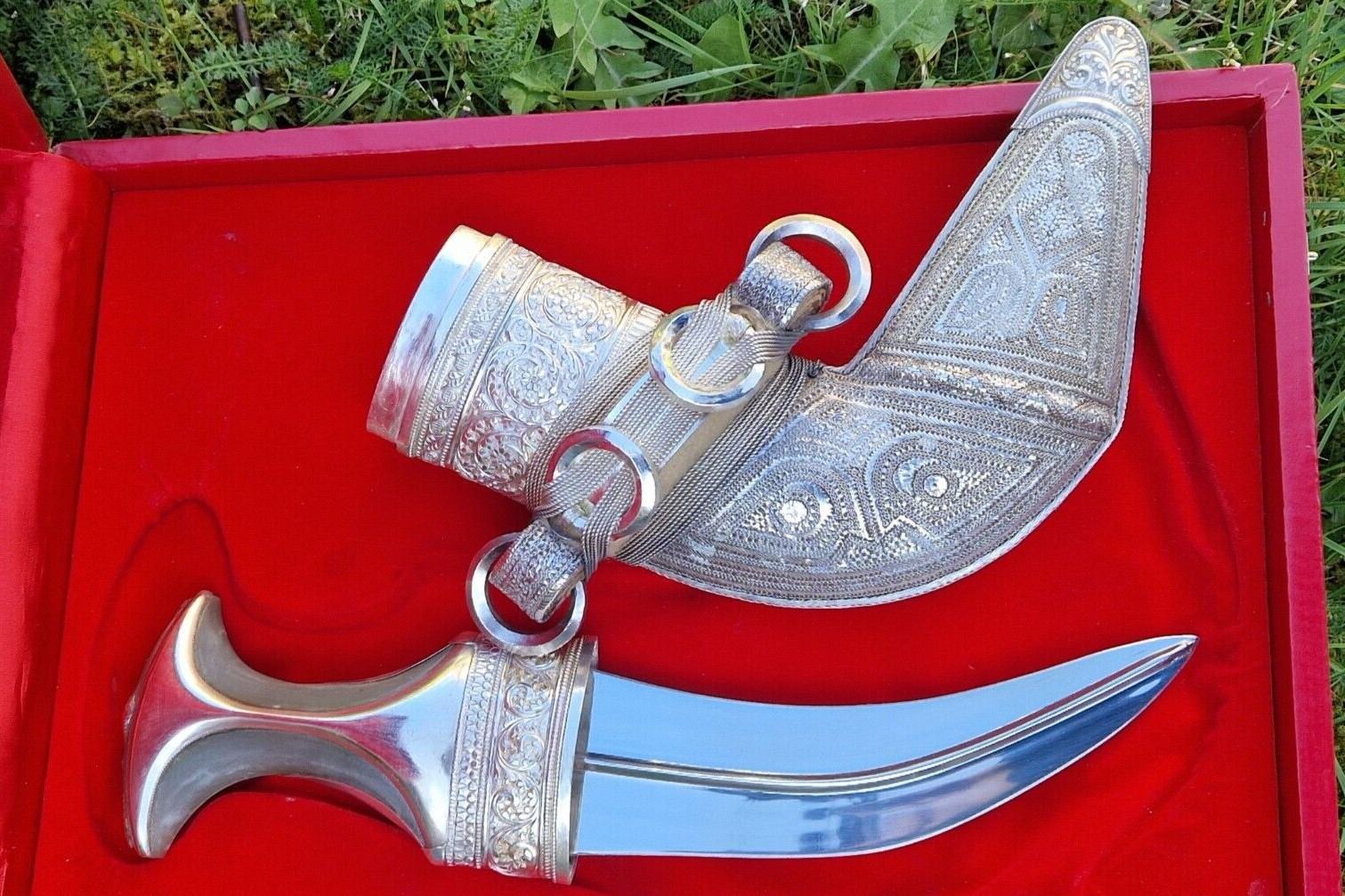The Omani Dagger: Secrets Behind A Symbol Of Pride And History

The Omani dagger, known as the khanjar, holds a special place in Omani culture. This curved blade isn't just a weapon; it's a symbol of pride, heritage, and identity. Worn by men during special occasions and ceremonies, the khanjar represents bravery and social status. Crafted with intricate designs, each dagger tells a story of the artisan's skill and the owner's lineage. The handle, often made from materials like silver or horn, adds to its uniqueness. Understanding the significance of the Omani dagger offers a glimpse into the rich traditions and values of Oman. Curious about its history and craftsmanship? Let's dive in.
The Omani Dagger: A Symbol of Heritage
The Omani dagger, or khanjar, stands as a powerful emblem of Oman's rich history and culture. Worn with pride by Omani men, this curved blade tells stories of bravery, tradition, and identity. Let's explore the secrets behind this iconic symbol.
Craftsmanship and Design
The making of a khanjar involves intricate craftsmanship. Each dagger is unique, reflecting the skills and creativity of its maker. Here are some key places where you can witness this artistry firsthand.
Nizwa Souq: Known for its bustling market, Nizwa Souq offers a glimpse into traditional Omani life. Here, artisans craft khanjars using age-old techniques passed down through generations.
Muttrah Souq: Located in Muscat, this souq is famous for its variety of traditional goods. Among them, you'll find beautifully crafted khanjars, each telling its own story.
Sur: A coastal city known for its shipbuilding, Sur also boasts skilled khanjar makers. Visiting Sur provides a unique opportunity to see how maritime influences shape the design of these daggers.
Historical Significance
The khanjar is more than just a weapon; it holds deep historical significance. Understanding its past helps appreciate its role in Omani culture today.
Bahla Fort: This UNESCO World Heritage site offers insights into Oman's history. The fort's museum showcases ancient khanjars, highlighting their importance in Omani society.
National Museum of Oman: Located in Muscat, the museum houses a vast collection of artifacts, including khanjars. Each piece provides a window into the past, illustrating the evolution of this iconic dagger.
Al Hazm Castle: This historic castle in Rustaq features displays of traditional weaponry, including khanjars. Exploring the castle reveals how these daggers were used in defense and ceremonial contexts.
Cultural Importance
In modern Oman, the khanjar remains a symbol of national pride and cultural identity. It plays a significant role in various ceremonies and celebrations.
Royal Opera House Muscat: While primarily a venue for performing arts, the Royal Opera House also hosts cultural exhibitions. These often include displays of traditional Omani attire, complete with khanjars.
Sultan Qaboos Grand Mosque: This architectural marvel in Muscat is a center of cultural and religious life. Visitors can learn about the role of the khanjar in Omani customs and traditions.
Omani Heritage Gallery: This gallery in Muscat showcases a range of traditional Omani crafts, including khanjars. It's a great place to understand the cultural significance of these daggers in contemporary Oman.
Modern-Day Relevance
Today, the khanjar continues to be a cherished symbol, blending tradition with modernity. It represents Oman's journey through time, from ancient battles to present-day celebrations.
Muscat Festival: Held annually, this festival celebrates Omani culture with music, dance, and traditional crafts. The khanjar often takes center stage, symbolizing the enduring spirit of Oman.
Salalah Tourism Festival: This festival in the Dhofar region showcases the diverse cultural heritage of Oman. Visitors can see khanjars being worn and displayed, reflecting their ongoing relevance.
Omani National Day: Celebrated on November 18th, National Day features parades and events where the khanjar is prominently displayed. It serves as a reminder of Oman's rich history and vibrant culture.
The Timeless Legacy of the Omani Dagger
The Omani dagger, or khanjar, stands as a powerful symbol of Oman's rich history and cultural pride. This iconic weapon, with its intricate designs and craftsmanship, reflects the nation's heritage and values. Passed down through generations, the khanjar is more than just a weapon; it is a piece of art and a badge of honor.
Wearing a khanjar during special occasions signifies respect for tradition and a deep connection to Omani roots. The dagger's unique design and the skill required to create it highlight the artisans' dedication and expertise. As Oman continues to modernize, the khanjar remains a cherished emblem, bridging the past with the present.
Understanding the significance of the Omani dagger offers a glimpse into the heart of Omani culture. It reminds us of the importance of preserving traditions while embracing the future.

